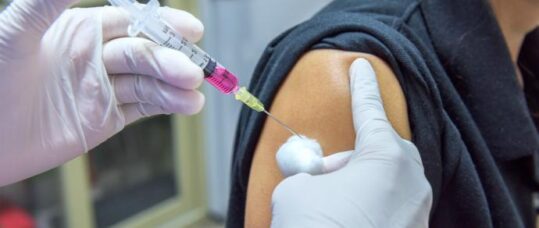HPV vaccine reduced cervical cancer by 90% in Scotland, study finds

The HPV vaccine has led to ‘profound reduction’ in the rate of precancerous cervical changes in Scotland.
Rates of high grade CIN have fallen by almost 90% in Scottish women who received the HPV vaccine, according to the study, with the study authors suggesting that the findings may warrant a ‘redesign’ of the Scottish cervical screening programme.
The study was carried out by researchers in Scotland and looked at records for just under 140,000 women who had a smear test result recorded at the age of 20. They compared rates of CIN in women born in 1995-96, who were routinely vaccinated against HPV at the age of 12 or 13, and women born in 1988-90, who were not vaccinated.
Related Article: Mythbuster: ‘I don’t need a smear test – I’ve had my HPV jab’
The researchers found that the rate of grade 3 CIN fell by 89%, from 0.59% in unvaccinated women born in 1988-90 to 0.06% in women born in 1995-96.
There was an 88% reduction in the rate of grade 2 CIN and a 79% reduction in grade 1.
They also found that unvaccinated women born in 1995-96 had a 63% reduction in grade 1 CIN, a 67% reduction in grade 2 CIN and a 100% reduction in grade 3 CIN compared to women born in 1988-90, suggesting that the HPV vaccine has created a significant herd protection effect.
They said in the paper: ‘We have presented linked data… which show routine immunisation with three doses of bivalent vaccine at age 12-13 years is associated with a profound reduction of cervical disease seven years later.’
They also noted that reduced rates of cervical disease and fewer women being referred for colposcopy would require a ‘redesign’ of cervical screening programs in order to maintain colposcopy standards
Related Article: Smoking rates fall most significantly in the North of England
They said: ‘Different modelling approaches have been used to inform optimal scenarios for screening of vaccinated women but have converged on the conclusion that, for some women, two or three screens in a lifetime using HPV testing might be sufficient.
‘Such sporadic screening, coupled with much reduced disease and decreasing numbers of women referred for colposcopy and treatment, necessitates redesign of cervical screening programmes. Ultimately, the clinical and economic rationale for cervical screening will need to be reviewed.’
Jo’s Trust, a cervical cancer charity that reviewed the paper, commented: ‘We think (it has) massive implications for the screening programme, vaccine and also impacts on diagnoses in the future. It gives weight for activity to increase vaccine uptake, has implications on screening intervals.
‘It also feeds into our policy calls for a new IT infrastructure (for the screening programme in England) to record and enable invitations based on whether someone has at the vaccine if intervals can be extended.’
Related Article: Boost your CPD with the redesigned Nursing in Practice 365 platform
The findings follow Public Health England’s cervical screening campaign – launched last month – to boost uptake of the vaccine in England after attendances hit a 20-year low.
BMJ 2019; online 3rd April

See how our symptom tool can help you make better sense of patient presentations
Click here to search a symptom


The HPV vaccine has led to ‘profound reduction’ in the rate of precancerous cervical changes in Scotland.



